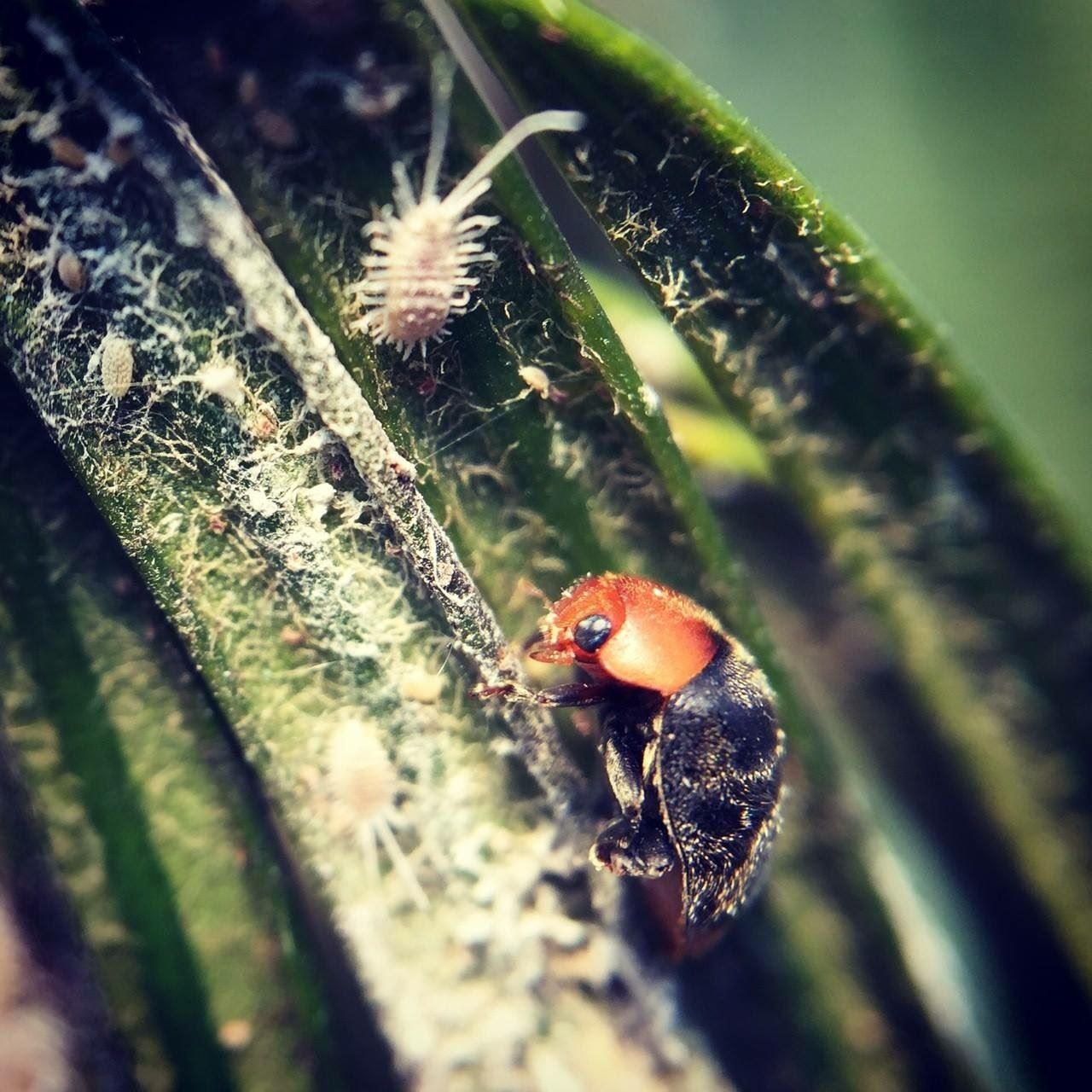In an effort to care for our plants and animals the best way possible while minimizing any negative impact on the environment, Mesker Park Zoo & Botanic Garden applies integrated pest management practices wherever possible. Integrated Pest Management, or IPM, is a five-step plan that starts with identifying the pest.
Once you know what you are dealing with, monitoring pest activity is the next step to help determine the action needed for each situation. Every pest has a life cycle; understanding it is critical to establish control measures. We follow a handy flow chart to help determine the best action and choose the controls that work best for the situation. Controls include physical/mechanical, cultural, chemical or biological methods. Sometimes all are used in order to handle the task at hand, but we start with those that have the least potential impacts. At MPZ&BG, we tend to use chemical controls as a last resort once other measures have been exhausted.
The botanical department uses all measures of IPM. In the 10,000-square-foot Amazonia rainforest, taking care of plant pests such as mealy bugs and scale can be a challenge. In order to keep animals and people safe, we do not use insecticide sprays inside Amazonia. Physical controls involve keeping leaf litter cleaned up to minimize hiding spots and breeding grounds. Cultural controls include providing plants with optimal conditions, including proper humidity, lighting, and water. Maintaining plant health is vital because pests tend to attack stressed plants the most. Our biological controls involve releasing beneficial insects. One of our favorites is the Cryptolaemus montrouzieri or mealy bug destroyer. As their common name suggests, these beetles lay their eggs in the cottony masses of mealy bug nests. Once they hatch, the larvae voraciously eat mealy bugs. Crytomleamus beetles are beneficial in both adult and larval stages and are great to use in Amazonia as well as the three support greenhouses on zoo property. Aphytis melinus are tiny wasps used for scale control and lacewing larvae are employed for other soft bodied insects including aphids.

While the use of beneficial insects doesn’t always eradicate the pest problems, it maintains a healthy balance for plants to thrive as well as keeping our staff, visitors, and animals safe from pesticide exposure.
The addition of Amazonia in 2008 created the perfect environment for the creatures intended to live there and some that were not—including roaches! Animal food and lots of hiding spots were big attractions to several roach species. Again, we followed the steps to identify and decide which control methods would work best for the situation, then got to work to keep roaches in check. Early on, we implemented a control program that consisted of monitoring and assessing numbers, then releasing a parasitic wasp, Aprostocetus hagenowii, biweekly. The wasp will seek out roach egg cases and lay its eggs inside. Once the wasp eggs hatch, the larvae eat the contents of the roach egg case. The adults then emerge to find more roach eggs to parasitize. Once established, the wasps help to control roach populations. Nearly 14 years later, we think they may still be at work. Another release is planned this year to continue the process. While this doesn’t eliminate roaches completely, it works in tandem with other control methods to keep them in check.

Another cool IPM program we use is to control filth flies that tend to attack the ears of animals such as wolves and tigers. The horticulture and animal departments work together to release another type of predatory wasp that helps control filth flies. Every other week from April until September, fly egg cases parasitized by wasps arrive and are distributed to different areas of the zoo. The horticulture staff fill and leave bottles for each animal area at the commissary to be picked up along with animal diets. Zookeepers and staff then add them to the proper release containers in the animal and compost areas. With these two departments working together, we help to reduce the number of annoying flies that can spread bacteria and disease and are a nuisance to animals.

When adding new animal habitats like Penguins of Patagonia, IPM is factored in from the beginning. Mosquitos can carry West Nile virus which is a primary health concern for our precious birds. Many IPM measures have been put in to place to keep them safe. Physical control includes oscillating fans to create air movement as mosquitos dislike turbulence. Culture controls involve assuring that gutters and other areas are clear of standing water. Biological controls include planting plants that deter mosquitos in the landscaping around the habitat as well as installing bat boxes and releasing native mosquito fish to surrounding ponds. Chemical controls are available, but we are confident that by controlling breeding conditions for mosquitos, we will successfully control the population.
IPM is a responsible and environmentally friendly way to control pest populations. This method can be used to control flies, plant-sucking insects, roaches, and many other undesirables. While pests are always challenging, it’s fun to be creative with management methods on zoo grounds. IPM encourages collaboration between departments and promotes a well-rounded way to keep our plants, animals, staff, and visitors safe.
Misty Minar, Mesker Park Zoo & Botanic Garden